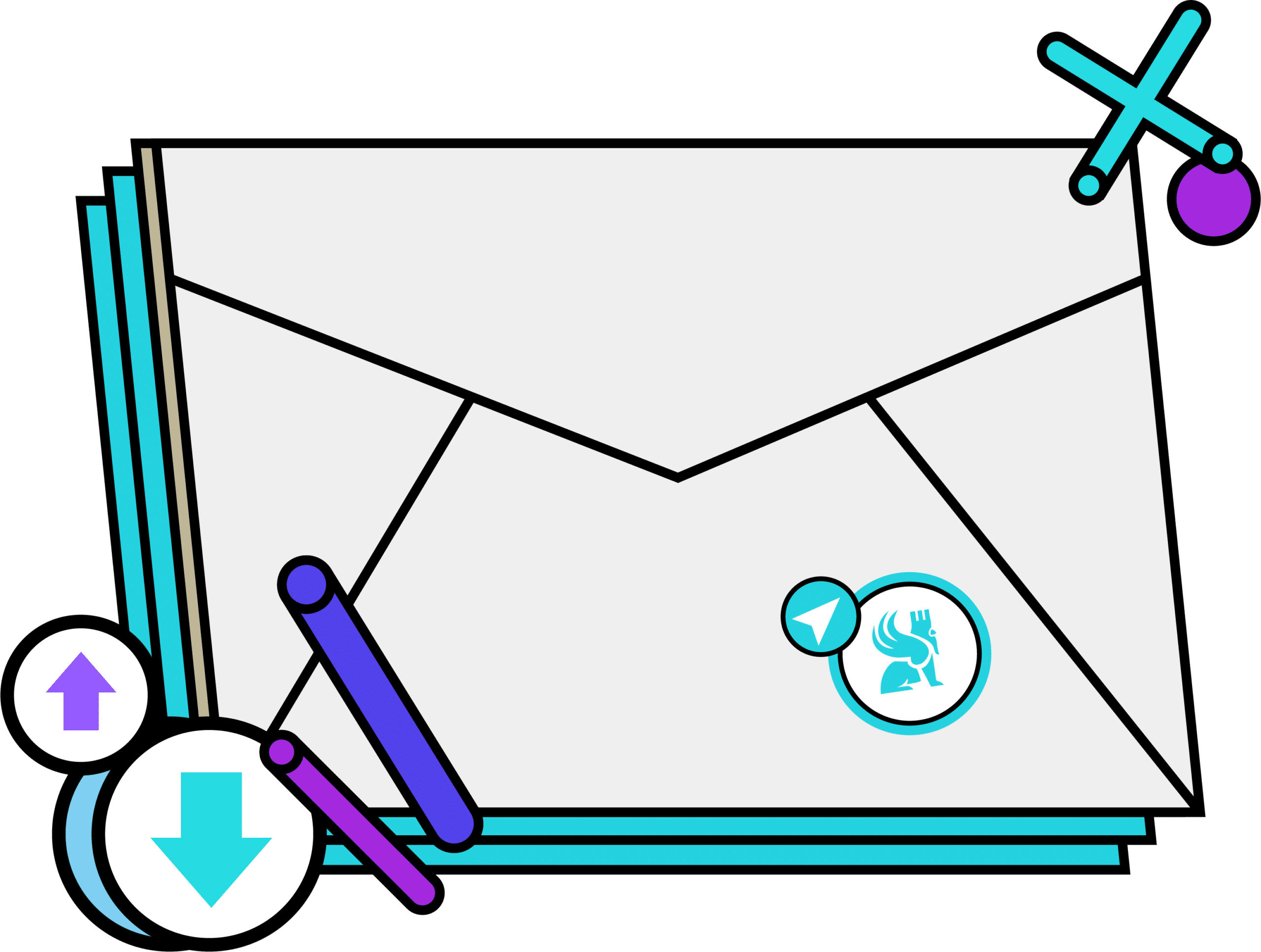LangChain enables the creation of AI applications capable of interacting with data, tools, and even users through natural language. Discover everything you need to know about this open-source framework and why it is becoming the hub for developing custom AI agents!
Generative artificial intelligence systems are powerful, yet often lack awareness. Pose a question to ChatGPT or Claude, and they will respond eloquently… unless it involves private data, precise actions, or multi-step logic. As standalone entities, these models function like brains without memory, without an itinerary, and without access to reality. Fortunately, an open-source framework has emerged to address this issue: LangChain.
It acts as a bridge between an LLM language model and a vast ecosystem of data, tools, and interactions. Its purpose? To enable the creation of truly intelligent applications. Applications that can analyze your documents, call an API, query a SQL database, and even autonomously determine the best course of action.
The need to be an AI expert to grasp its significance is unwarranted: LangChain is the tool that allows you to transition from prompt to product and convert a simple chatbot into a genuine software agent.
What exactly is LangChain?
LangChain is a development framework that facilitates the creation of applications powered by language models, enriched by logic, external data, and tangible actions. Picture an LLM as a super assistant with perfect comprehension of human language but confined in an empty room.
LangChain is the key that unlocks the door: it enables access to a customer database, an Excel sheet, or a weather API, for instance. It allows you to sequence logical steps rather than performing every action within a single prompt. For example, you can query a database, reformulate a request, or validate a result.
Additionally, it can link the model to information sources such as files, SQL databases, websites, or cloud storage. Furthermore, tools like Python functions, search engines, or even other AIs can be integrated.
Another capability is the deployment of autonomous “agents”, capable of independently determining which tool to utilize at each step. Consequently, we move from a passive model (responding to a question) to an active application (acting on instructions).
LangChain was devised for Python developers (and now JavaScript) seeking to construct complex AI systems without reinventing the wheel. It is grounded in a modular architecture and offers a wide variety of ready-to-use components. It’s akin to a LEGO set for applied AI!

Blocks, Chains, Agents: how does it work?
LangChain’s architecture appears straightforward but possesses a tremendous flexibility. To comprehend its functionality, envision three core concepts: Chains, Tools, and Agents.
A Chain is utilized to structure reasoning. It’s a sequence of actions a model will follow to achieve a task. It isn’t merely a simple prompt given to AI, but a planned-out scenario. For instance: “The user poses a question → the AI accurately reformulates the query → a database is queried → the response is synthesized → it is conveyed back to the user.”
Each phase is a block of the chain. Naturally, this approach allows for greater control, debugging, and precision than a vague, single prompt. Tools, by contrast, enable linking the AI to the real world. These are instruments the LLM can access for specific tasks.
A calculator. A weather API. A search engine. A custom Python function. LangChain enables the creation of these tools or the use of pre-integrated ones (Google Search, Wolfram Alpha, Zapier, etc.). With an agent, it advances to the next level: you no longer dictate a fixed sequence of steps. You provide the LLM with a goal, a list of available tools, and it determines the strategy to pursue.
Consider an assistant needing to book a flight. It will first investigate flights, verify dates on the calendar, pose a question to the user, and then proceed to purchase. LangChain can regulate this behavior via its agents. The model becomes proactive, capable of solving problems through multi-stage processes, with loops, conditional decisions, and dynamic access to sources of truth.
What does this change for businesses?
In the professional sphere, “generative” AIs are often seen as remarkable… but impractical. Why? Because they hallucinate, lack knowledge of your internal data, and respond in text without real action capability.
However, LangChain transforms this perspective. It bridges the LLM’s capabilities with business realities. Let’s explore some use cases. An HR agent can automatically address inquiries about the collective agreement by consulting the documentation base.
A customer representative can correlate details across the FAQ, product information, and the user’s purchase history. An intelligent dashboard can summarize month’s performance metrics derived from your Excel files or SQL queries.
The advantage? Reduced friction, increased relevance, and intelligently automated workflows. With LangChain, businesses can innovate internal assistants, productivity copilots, or enhanced analytics systems without needing to reconstruct their entire software framework.
Crucially: responses are contextualized, explainable, and auditable. AI is no longer a black-box entity but a connected, supervised, and reliable system.

Why does this framework dominate (for now) the competition?
Since the advent of LLMs, several frameworks have risen to aid their integration into tangible applications. Notable amongst these are LlamaIndex, Haystack, and Semantic Kernel (backed by Microsoft). Each possesses its advantages, but LangChain retains the most popularity. And it’s not by chance.
Its primary distinction lies in its extreme modularity. Everything functions as a component. You can configure as desired, without starting anew. This framework is further bolstered by immense community support. Its GitHub is dynamic, there’s an abundance of tutorials, and it maintains compatibility with major LLMs (OpenAI, Claude, Mistral, etc.).
Moreover, the integrated connectors facilitate quick integration. You can connect it to files, SQL, APIs, JSON, a cloud, or even a Google Docs document. It is among the few that offer an “agent-first” ecosystem, with straightforward logic for autonomous agents.
Nonetheless, LangChain also suffers from its popularity. The tool evolves rapidly and, at times, too rapidly for companies in search of stability. Its complexity can swiftly escalate if a clear architecture isn’t outlined from the onset. And it may prove “overkill” for very simple use cases.
However, when seeking to industrialize an AI, LangChain stands out. Current market offerings do not match its scalability, compatibility, and customization options.
Conclusion: LangChain finally connects AI to the real world
The era of isolated language models is approaching an end. With LangChain, AIs extend beyond text production: they access your data, employ practical tools, adhere to business logic… making themselves truly valuable.
This framework signifies a pivotal shift. We no longer develop “around AI”; we develop in conjunction with it. This intelligently orchestrated human-machine partnership enables the creation of business assistants, copilots, decision agents. In essence, a new generation of applications!
But to capitalize on this, one must master the right tools. And grasp the inner workings… To fully leverage LangChain’s possibilities and to build intelligent applications, a grasp of the fundamentals of data processing, artificial intelligence, and AI development is essential.
Fortunately, DataScientest offers several tailored courses to tackle these challenges, all with a hands-on approach: The Data Scientist training, teaching you how to exploit and model data with Python, incorporating machine learning and deep learning.
The Machine Learning Engineer curriculum, focused on MLOps, deployment, APIs, and model industrialization.
The Data Engineer course, ideal for those wishing to structure, connect, and automate data flows. This skill complements LangChain admirably!
And not to overlook the Generative AI training, dedicated to mastering models such as GPT, agents, RAG (retrieval-augmented generation), and practical applications of frameworks like LangChain.
With a 100% project-focused teaching strategy, these trainings empower you to develop your own tools, agents, and AI services, complete with professional certification. Available in bootcamp, work-study, or continuing education formats, DataScientest guides you toward employment with flexible schedules, dedicated coaches, and CPF or France Travail eligibility. Join DataScientest and bring your AI ambitions to fruition!

You now know all about LangChain. For more information on similar topics, explore our comprehensive article on the Prompt Engineer profession and our piece on generative AI!










